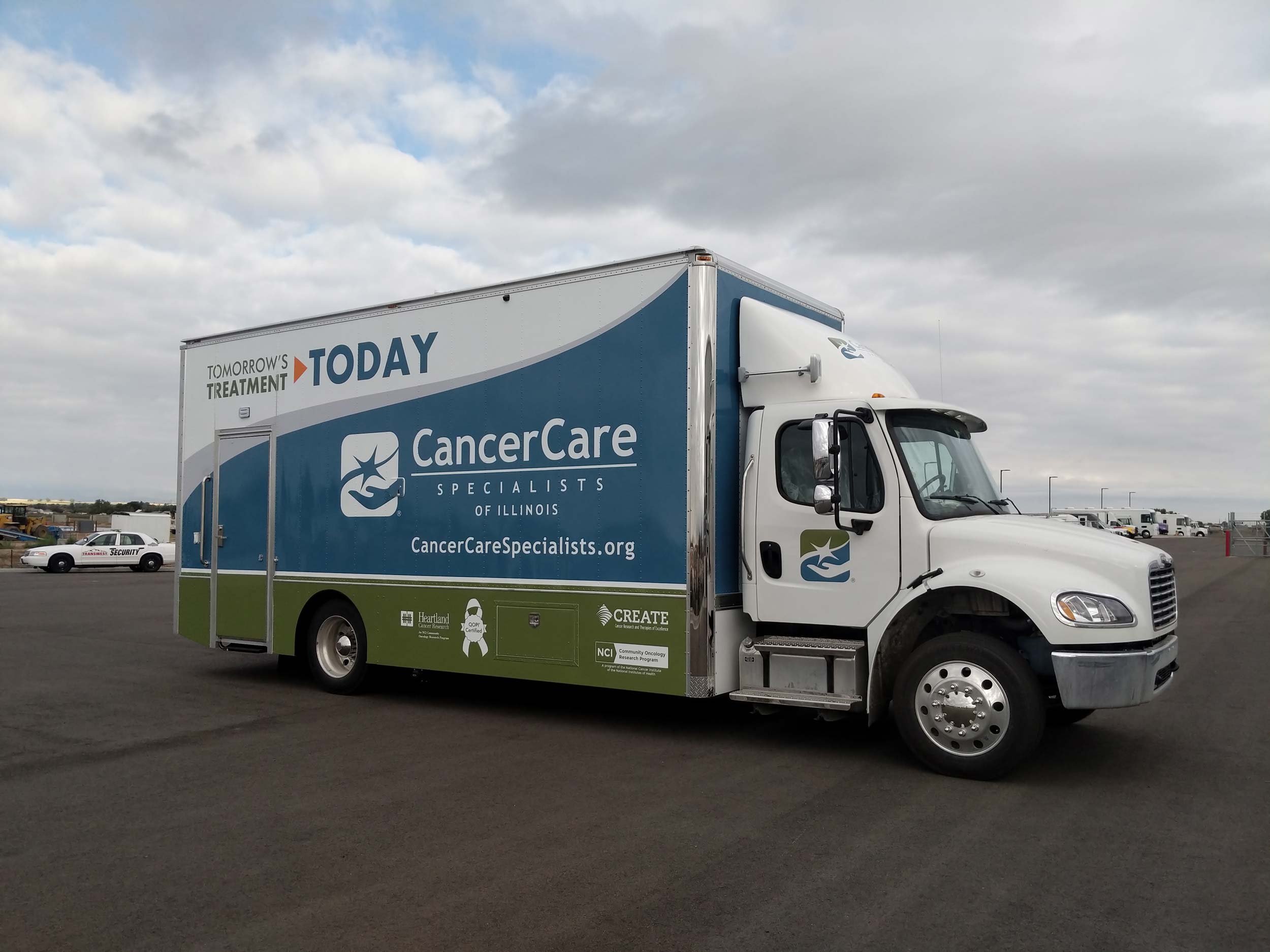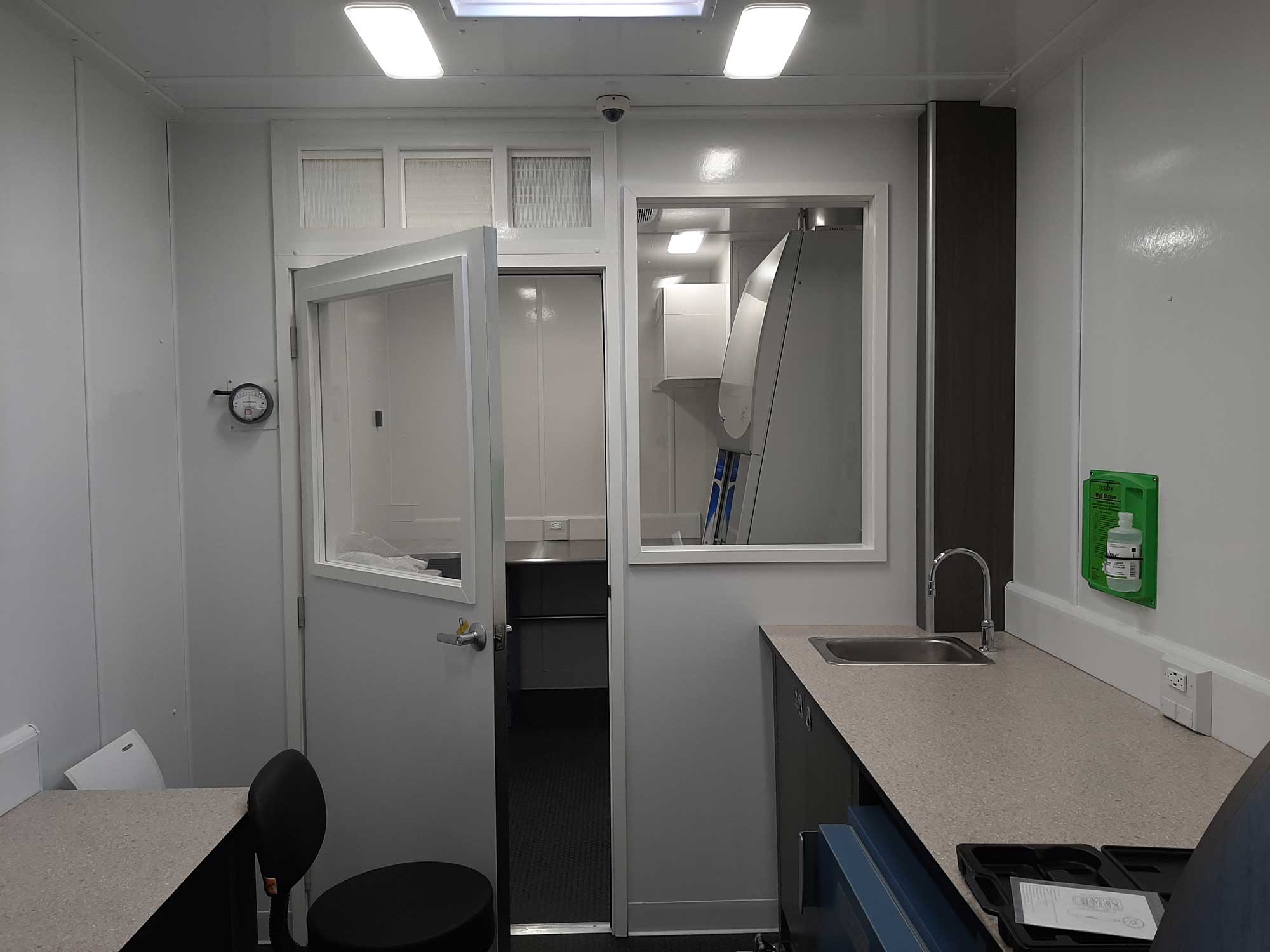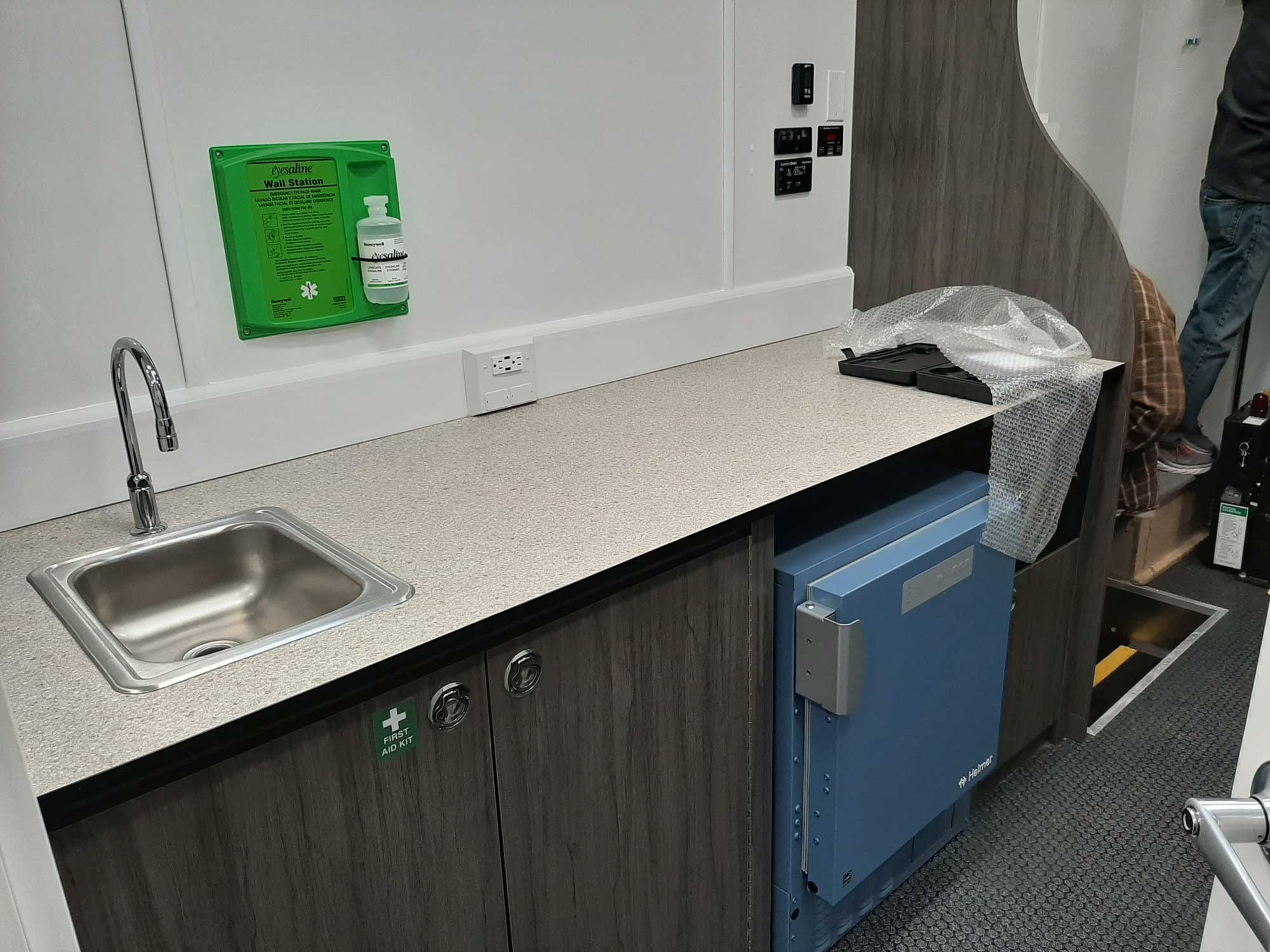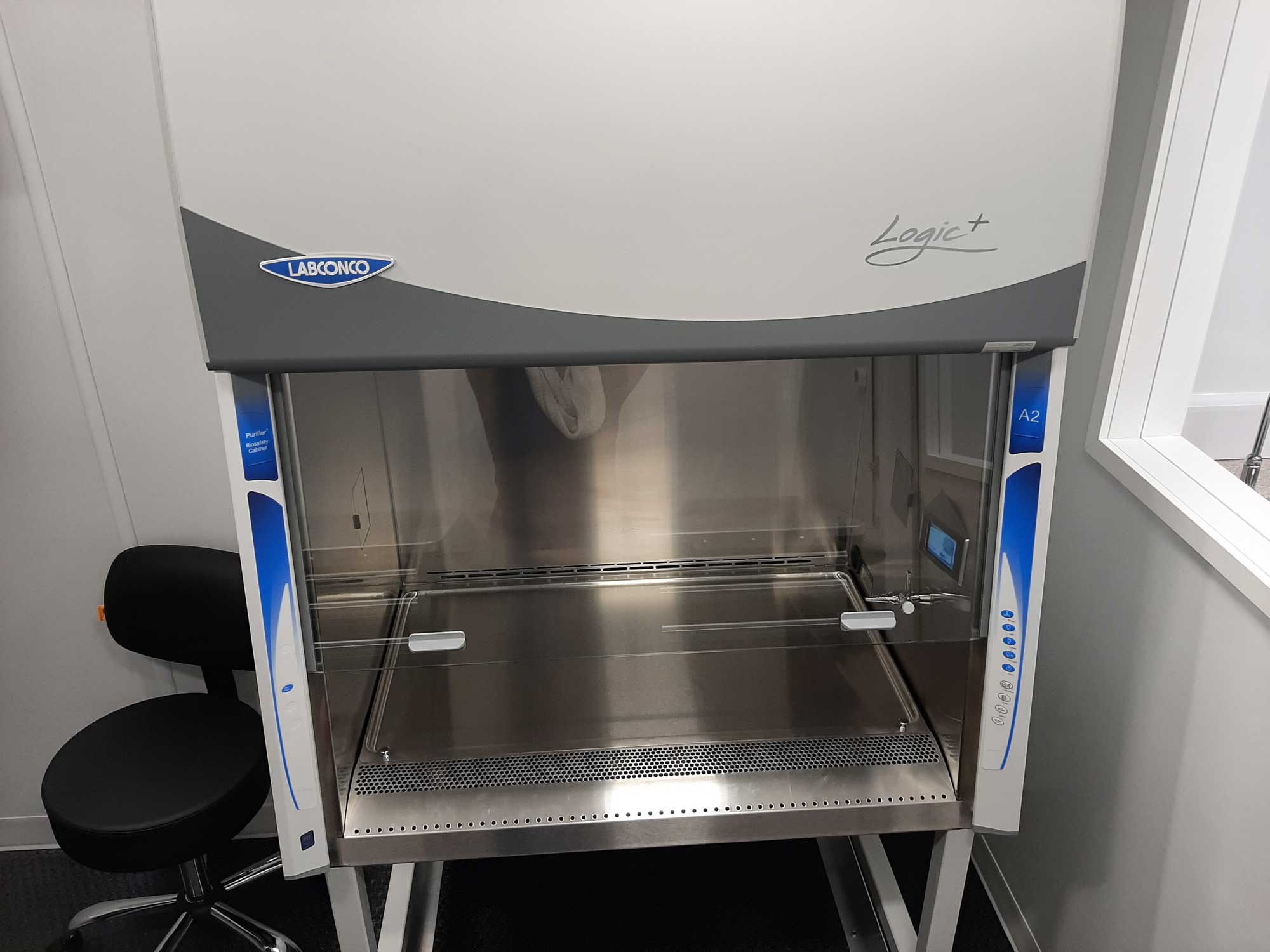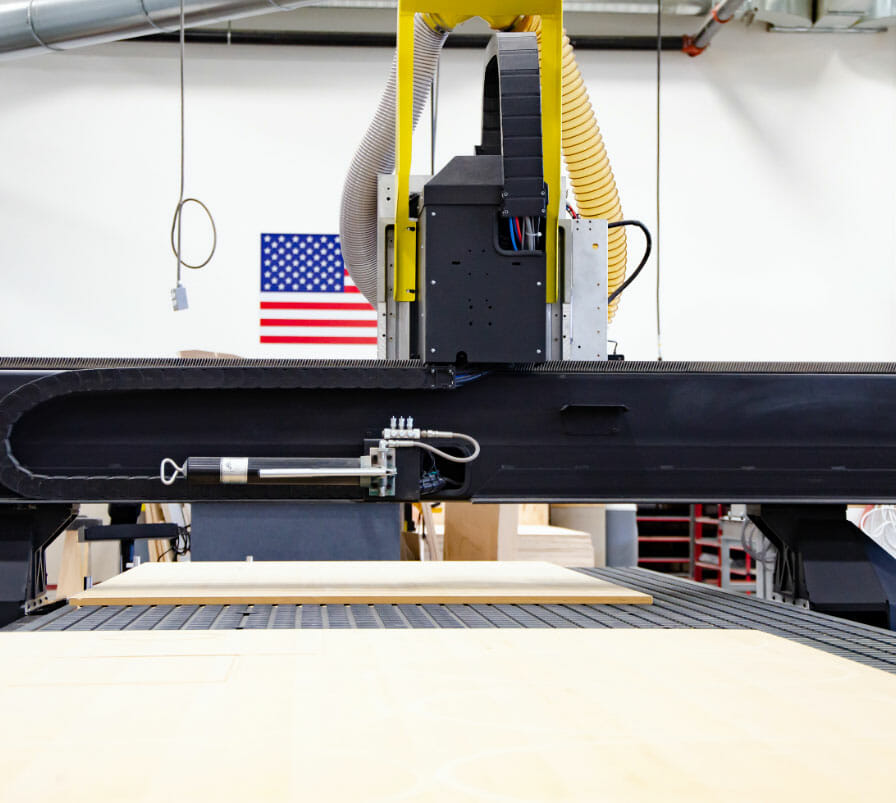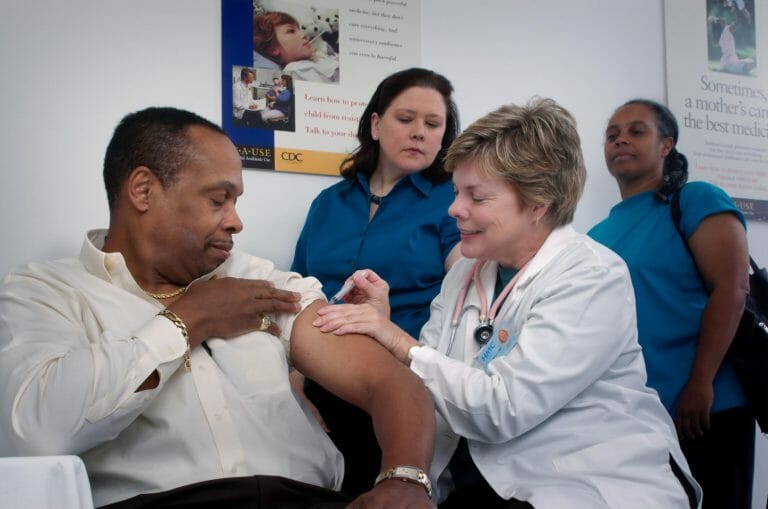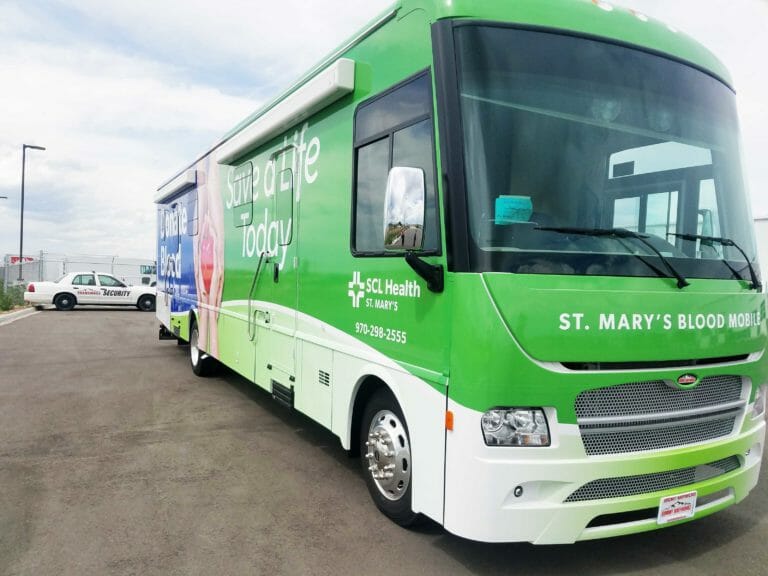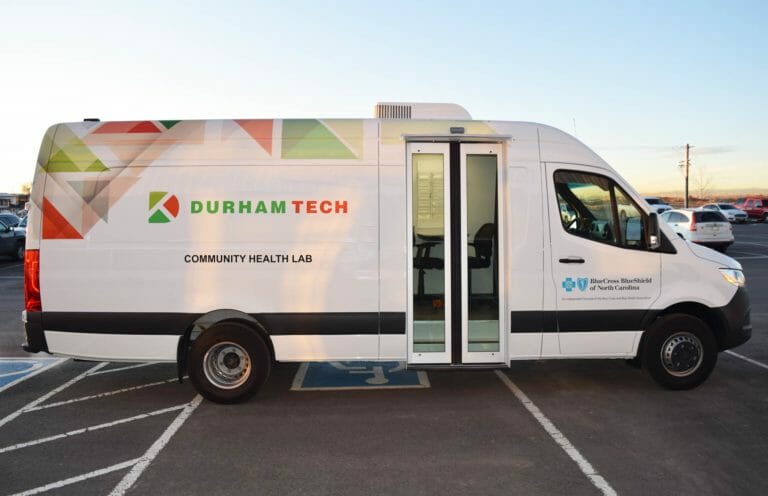What are common layouts for mobile lab units?
Many mobile labs will have a door at the side or rear of the vehicle, along with a ramp, wheelchair lift, or stairs. There will often be a small area near the door for reception or intake. Inside the vehicle, there is usually enough space to accommodate a small classroom, staff meeting, or a handful of patients and nurses. There may be lab equipment, chairs and benches, or computers and testing equipment, depending on the purpose of the mobile lab.
Many mobile labs also contain storage areas and racks or closets for equipment. Labs that are used for public health services or educational purposes may have larger seating areas and less storage space, while research lab units will often need multiple compartments for equipment and data collecting.
What are mobile labs used for?
Mobile laboratory vehicles can be used to perform research, provide educational services, or serve as a teaching lab. They are often equipped with science and research equipment and then parked in a location where students can meet for research or small group lessons.
Government agencies such as the National Institute for Health (NIH) and Center for Disease Control (CDC) have used mobile labs to respond to national and worldwide health crises, such as the COVID-19 pandemic and the Ebola outbreak. These labs are often used to distribute safety equipment, test blood samples, conduct international research, and offer testing services at a reduced cost. Mobile labs allow these agencies to coordinate a quicker response to outbreaks, incorporate state-of-the-art technology, and provide protective healthcare services in increasingly accessible ways.
What equipment is found in a mobile testing vehicle?
The type of equipment that is contained in a mobile testing vehicle largely depends on the lab’s purpose and agency. For example, if the lab is operated by a public health or government agency such as the CDC or NIH, it will likely include testing equipment for deadly viruses, diseases, and outbreaks such as COVID-19. They may also contain equipment for health services such as blood tests, mental healthcare, nutrition analysis, and fitness assessments. Veterinary equipment will be found in any lab that deals with animals, such as mobile vet labs or labs operated by agriculture departments. Mobile labs that are being used for educational purposes will often contain traditional classroom lab equipment, water and electricity, desks and tables, textbooks, whiteboards, and seating areas.
Who uses mobile labs?
Mobile labs can be used for a wide range of purposes. They might be utilized by public health agencies or first responders to control health outbreaks, emergency situations, or simply to provide preventative care and testing. In recent years, mobile labs have become increasingly popular as educational facilities.
Educational labs might be operated by private or public universities, agricultural departments, environmental agencies, and more. These laboratories often contain equipment for data collection and field research. Some lower-tech labs might be used for blood drives or border control.
Mobile labs are also used by law enforcement to analyze evidence on-site, support investigations, and improve crime-fighting efforts. Labs can be used to test for drugs, and they can also be used by public health facilities to test for chemicals and pesticides in foods.
Why is customization needed for a mobile lab?
Mobile labs are used by an increasingly wide range of institutions. From teachers to healthcare workers, from vets to police officers, from graduate students to soldiers in the military, no two mobile labs serve the same population or purpose. Because of this, customization is important to create the correct layout, incorporate the right equipment, and accommodate the type of staff that is necessary for each agency.
For example, a public university might have a mobile lab for student research. In this case, the mobile lab will likely be outfitted with laboratory benches and chairs, storage space for beakers and other equipment, and computers and smart boards for data collection. Conversely, a public health agency would have a lab designed to provide preventative testing and treatment to a community. It would need slide-out panels to accommodate chairs and traffic flow, testing equipment, and technology for intake and processing.
